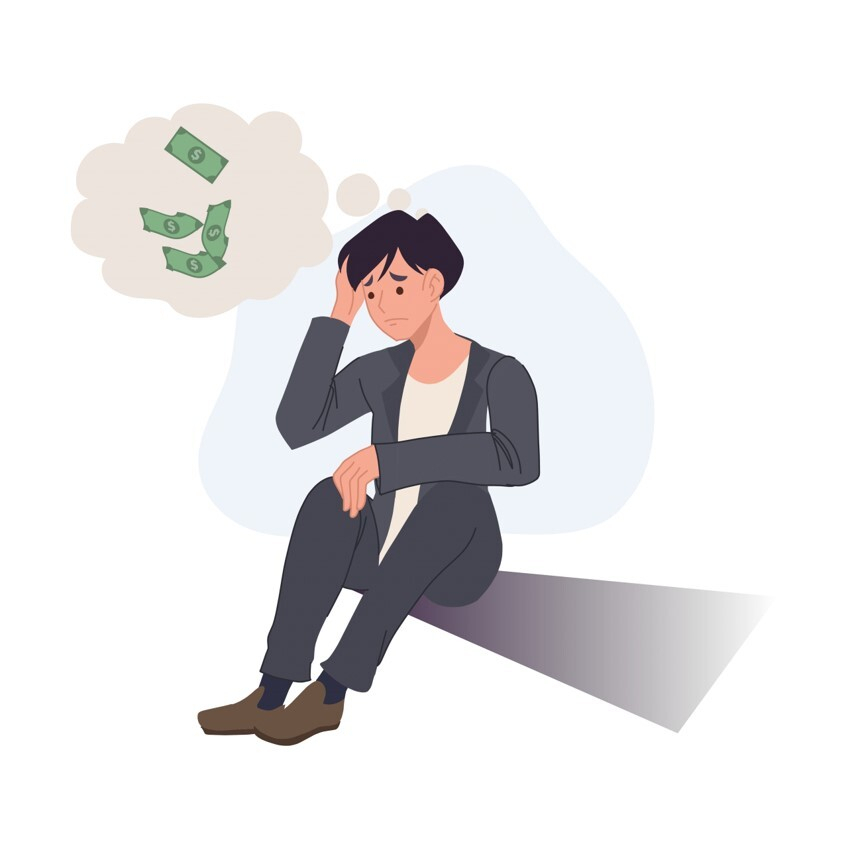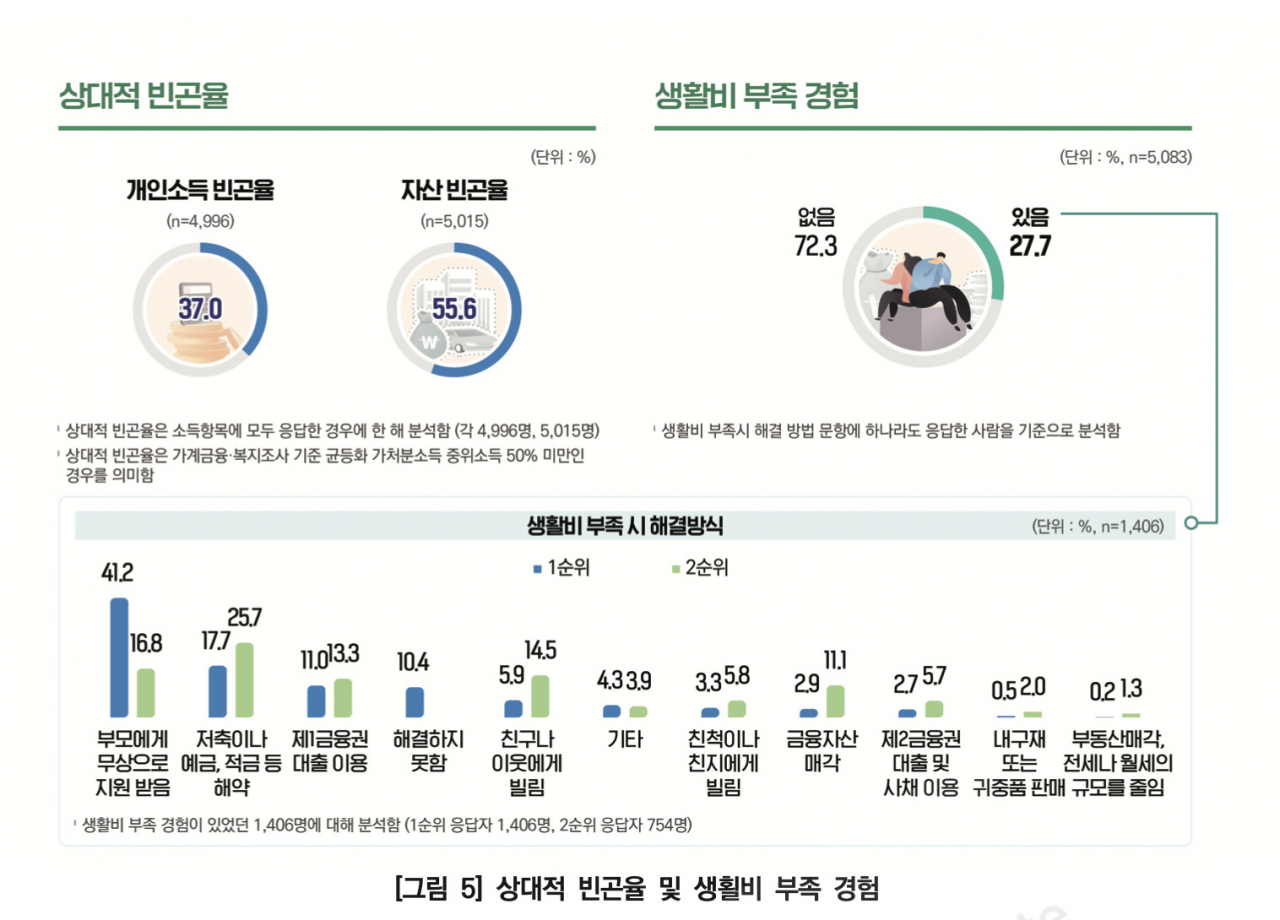Half of young people struggling financially: Seoul
Financial instability among young adults, reliance on parents for help may worsen retirement prospects for older adults, experts say
By Lee Jung-jooPublished : Dec. 6, 2023 - 17:37

Nearly half of the youth population residing in Seoul now lives in poverty, with many seeking financial support from their parents, according to a new study released by the Seoul Metropolitan Government and Seoul Institute on Wednesday.
According to the 2022 Seoul Young Adult Panel Study, 55.6 percent of the youth population in Seoul faced asset poverty, meaning that they lack sufficient liquid assets to cover their basic needs for three months.
In particular, the asset poverty rate for the youth population living alone was 62.7 percent -- which was 7.1 percentage points higher than the asset poverty rate for Seoul’s entire youth population.
The poverty rate based on the young adult population’s individual income also reached 37 percent, with higher rates recorded for those in the younger age range.
Those aged 19 to 24 had the highest personal income poverty rate at 73.4 percent, while those on the other end of the spectrum, aged 35 or 36, had the lowest personal income poverty rate at 14.2 percent. Personal income poverty refers to individuals with a disposable income below 50 percent of the average median income for the total population.
Nearly 28 percent of young adults surveyed also reported experiencing insufficient living expenses.
When asked how they dealt with the situation, 41.2 percent of respondents said they received support from their parents. This was followed by 17.7 percent of respondents who said they had canceled savings or deposit accounts and 11 percent who said they received loans from financial institutions. Another 10.4 percent of respondents said they could not figure out a way to deal with their lack of living expenses.
The study concluded that most of Seoul’s youth population first resorted to personal relationships to overcome economic hardships, then turned to resources further afield.
The study was conducted on 5,083 adults aged 18 to 35 living in Seoul.
Additionally, 47.5 percent of respondents stated that they lived with their parents, while 34.3 percent indicated that they lived alone. The average expected age for this population to become independent from their parents was 30.6 years. By age group, the expected age of independence was 27.4 years for those aged 19 to 24 and 39.0 years for those aged between 35 to 36.
Some 87 percent of respondents said they were single. Of those, 46.5 percent stated that they have an intention to get married, while 19.1 percent said they did not.

“The high poverty rates among the youth population can be attributed to the consistently high unemployment rates,” said professor Shin Gyeong-a from Hanlim University’s department of sociology. According to Statistics Korea, 45.4 percent of the youth population aged 15 to 29 were recorded to have been unemployed for more than a year as of this year.
“If unemployment rates persist, this can lead to an increase in NEET youth -- or young people who are 'not in education, employment or training.' More governmental support is needed to not only aid young adults struggling with employment, but also to encourage NEET youth to return to the labor market,” the professor added.
Professor Lee Bong-ju from Seoul National University’s department of social welfare also stated that if youth poverty persists, it “could lead to higher numbers of young adults who are unhappy with their lives or who experience depression.”
According to the Seoul City Government and Seoul Institute’s study, 34.7 percent of young adults residing in Seoul stated that they are struggling with depression. Among them, 44.3 percent were unemployed after graduating, while 42 percent had been laid off.
Shin added that the poverty rate for older adults may also feel knock-on effects from youth poverty.
“If unemployment and high numbers of NEET youth persist, it will become harder for the youth population to become independent from their parents and they will continue to receive financial support from them,” Shin said. “In turn, it will become even more difficult for these parents to save money for retirement."
According to the Korea Employment Information Service in June, South Korea’s senior poverty rate was the highest among member countries of the Organization for Economic Cooperation and Development, at 40.4 percent.
“More governmental aid and employment support is needed to help youth struggling economically to get out of poverty,” Lee said.
Income support, in the form of providing money or supplying goods, was cited by 26.9 percent of respondents as an area that should be strengthened for young adults, followed by employment support and asset formation support.



















![[Today’s K-pop] Treasure to publish magazine for debut anniversary](http://res.heraldm.com/phpwas/restmb_idxmake.php?idx=642&simg=/content/image/2024/07/26/20240726050551_0.jpg&u=)